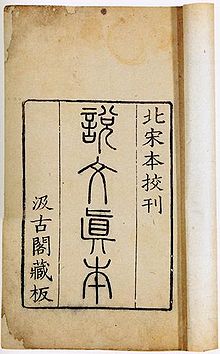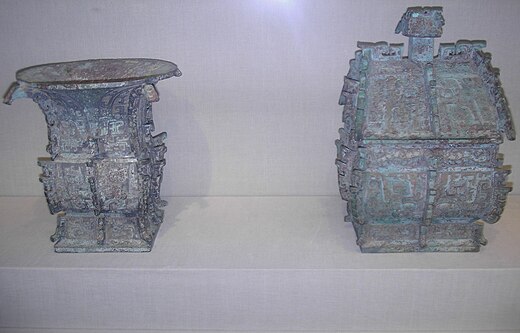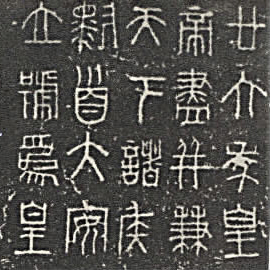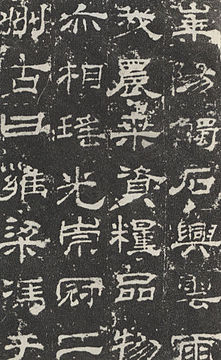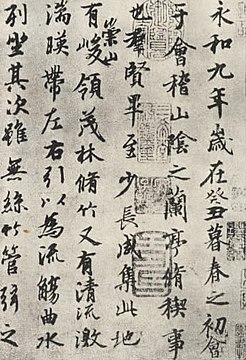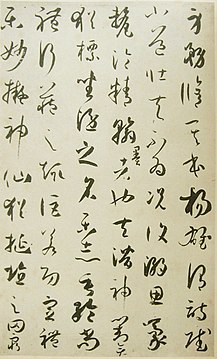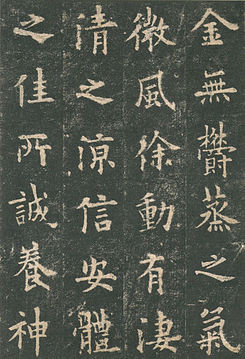
Chinese is a group of languages spoken natively by the ethnic Han Chinese majority and many minority ethnic groups in China. Approximately 1.35 billion people, or 17% of the global population, speak a variety of Chinese as their first language.
Hanyu Pinyin, or simply pinyin, is the most common romanization system for Standard Chinese. In official documents, it is referred to as the Chinese Phonetic Alphabet. It is the official system used in China, Singapore, Taiwan, and by the United Nations. Its use has become common when transliterating Standard Chinese mostly regardless of region, though it is less ubiquitous in Taiwan. It is used to teach Standard Chinese, normally written with Chinese characters, to students already familiar with the Latin alphabet. The system makes use of diacritics to indicate the four tones found in Standard Chinese, though these are often omitted in various contexts, such as when spelling Chinese names in non-Chinese texts, or when writing non-Chinese words in Chinese-language texts. Pinyin is also used by various input methods on computers and to categorize entries in some Chinese dictionaries. Hànyǔ literally means 'Han language'—meaning, the Chinese language—while pinyin literally means 'spelled sounds'.

In a written language, a logogram, also logograph or lexigraph, is a written character that represents a semantic component of a language, such as a word or morpheme. Chinese characters as used in Chinese as well as other languages are logograms, as are Egyptian hieroglyphs and characters in cuneiform script. A writing system that primarily uses logograms is called a logography. Non-logographic writing systems, such as alphabets and syllabaries, are phonemic: their individual symbols represent sounds directly and lack any inherent meaning. However, all known logographies have some phonetic component, generally based on the rebus principle, and the addition of a phonetic component to pure ideographs is considered to be a key innovation in enabling the writing system to adequately encode human language.
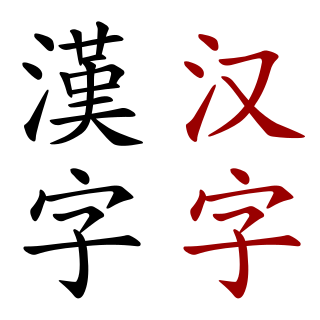
Chinese characters are logographs used to write the Chinese languages and others from regions historically influenced by Chinese culture. Chinese characters have a documented history spanning over three millennia, representing one of the four independent inventions of writing accepted by scholars; of these, they comprise the only writing system continuously used since its invention. Over time, the function, style, and means of writing characters have evolved greatly. Informed by a long tradition of lexicography, modern states using Chinese characters have standardised their forms and pronunciations: broadly, simplified characters are used to write Chinese in mainland China, Singapore, and Malaysia, while traditional characters are used in Taiwan, Hong Kong, and Macau.
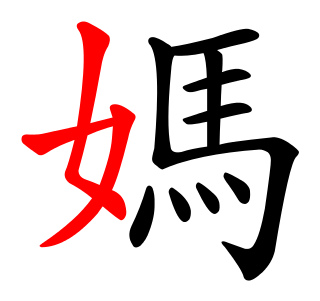
A Chinese radical or indexing component is a graphical component of a Chinese character under which the character is traditionally listed in a Chinese dictionary. This component is often a semantic indicator similar to a morpheme, though sometimes it may be a phonetic component or even an artificially extracted portion of the character. In some cases the original semantic or phonological connection has become obscure, owing to changes in character meaning or pronunciation over time.
Simplified Chinese characters are one of two standardized character sets widely used to write the Chinese language, with the other being traditional characters. Their mass standardization during the 20th century was part of an initiative by the People's Republic of China (PRC) to promote literacy, and their use in ordinary circumstances on the mainland has been encouraged by the Chinese government since the 1950s. They are the official forms used in mainland China and Singapore, while traditional characters are officially used in Hong Kong, Macau, and Taiwan.

The Shuowen Jiezi is a Chinese dictionary compiled by Xu Shen c. 100 CE, during the Eastern Han dynasty. While prefigured by earlier Chinese character reference works like the Erya, the Shuowen Jiezi featured the first comprehensive analysis of characters in terms of their structure, and attempted to provide a rationale for their construction. It was also the first to organize its entries into sections according to shared components called radicals.

Xu Shen was a Chinese calligrapher, philologist, politician, and writer of the Eastern Han dynasty. During his own lifetime, Xu was recognized as a preeminent scholar of the Five Classics. He was the author of Shuowen Jiezi, which was the first comprehensive dictionary of Chinese characters, as well as the first to organize entries by radical. This work continues to provide scholars with information on the development and historical usage of Chinese characters. Xu Shen completed his first draft in 100 CE but, waited until 121 CE before having his son present the work to the Emperor An of Han.
Chinese characters are generally logograms, but can be further categorised based on the manner of their creation or derivation. Some characters may be analysed structurally as compounds created from smaller components, while some are not decomposable in this way. A small number of characters originate as pictographs and ideograms, but the vast majority are what are called phono-semantic compounds, which involve an element of pronunciation in their meaning.
The earliest historical linguistic evidence of the spoken Chinese language dates back approximately 4,500 years, while examples of the writing system that would become written Chinese are attested in a body of inscriptions made on bronze vessels and oracle bones during the Late Shang period, with the very oldest dated to c. 1200 BCE.

A Chinese dictionary is a reference work for the Chinese language. There are two main types of Chinese dictionaries: zidian, which list individual Chinese characters and their definitions, and cidian, which list words and short phrases along with their meanings. Because written Chinese consists of tens of thousands of characters, over time editors of Chinese dictionaries have developed a number of ways to organize them for convenient reference.

The 1615 Zìhuì is a Chinese dictionary edited by the Ming Dynasty scholar Mei Yingzuo. It is renowned for introducing two lexicographical innovations that continue to be used in the present day: the 214-radical system for indexing Chinese characters, which replaced the classic Shuowen Jiezi dictionary's 540-radical system, and the radical-and-stroke sorting method.

Romanization of Chinese is the use of the Latin alphabet to transliterate Chinese. Chinese uses a logographic script and its characters do not represent phonemes directly. There have been many systems using Roman characters to represent Chinese throughout history. Linguist Daniel Kane wrote, "It used to be said that sinologists had to be like musicians, who might compose in one key and readily transcribe into other keys." The dominant international standard for Standard Mandarin since about 1982 has been Hanyu Pinyin, invented by a group of Chinese linguists, including Zhou Youguang, in the 1950s. Other well-known systems include Wade–Giles and Yale romanization.

The debate on traditional Chinese characters and simplified Chinese characters is an ongoing dispute concerning Chinese orthography among users of Chinese characters. It has stirred up heated responses from supporters of both sides in mainland China, Hong Kong, Macau, Taiwan, and among overseas Chinese communities with its implications of political ideology and cultural identity. Simplified characters here exclusively refer to those characters simplified by the People's Republic of China (PRC), instead of the concept of character simplification as a whole. The effect of simplified characters on the language remains controversial, decades after their introduction.
Bopomofo, also called zhuyin or occasionally zhuyin fuhao, is a transliteration system for Standard Chinese and other Sinitic languages. It is commonly used in Taiwan. It consists of 37 characters and five tone marks, which together can transcribe all possible sounds in Mandarin Chinese.
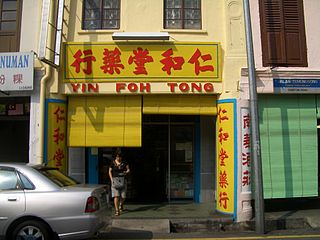
The different varieties of Chinese have been transcribed into many other writing systems.

The Chinese family of scripts includes writing systems used to write various East Asian languages, that ultimately descend from the oracle bone script invented in the Yellow River valley during the Shang dynasty. These include written Chinese itself, as well as adaptations of it for other languages, such as Japanese kanji, Korean hanja, Vietnamese chữ Hán and chữ Nôm, Zhuang sawndip, and Bai bowen. More divergent are the Tangut script, Khitan large script, Khitan small script and its offspring, the Jurchen script, as well as the Yi script, Sui script, and Geba syllabary, which were inspired by written Chinese but not descended directly from it. While written Chinese and many of its descendant scripts are logographic, others are phonetic, including the kana, Nüshu, and Lisu syllabaries, as well as the bopomofo semi-syllabary.
The Zilin or Forest of Characters was a Chinese dictionary compiled by the Jin dynasty (266–420) lexicographer Lü Chen (呂忱). It contained 12,824 character head entries, organized by the 540-radical system of the Shuowen Jiezi. In the history of Chinese lexicography, the Zilin followed the Shuowen Jiezi and preceded the Yupian.
Modern Chinese characters are the Chinese characters used in modern languages, including Chinese, Japanese, Korean and Vietnamese. Chinese characters are composed of components, which are in turn composed of strokes. The 100 most frequently-used characters cover over 40% of modern Chinese texts. The 1000 most frequently-used characters cover approximately 90% of the texts. There are a variety of novel aspects of modern Chinese characters, including that of orthography, phonology, and semantics, as well as matters of collation and organization and statistical analysis, computer processing, and pedagogy.
Chinese character education is the teaching and learning of Chinese characters. When written Chinese appeared in social communication, Chinese character teaching came into being. From ancient times to the present, the teaching of Chinese characters has always been the focus of Chinese language teaching.

